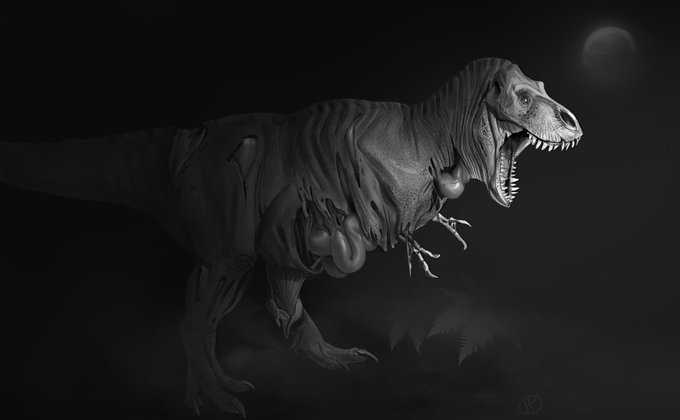#paleontologyのTwitterイラスト検索結果。 1,054 件中 32ページ目
2020 edition. Thirteen prehistoric beasts named after monsters, horror, folklore, or something else spooky. How many can you guess? Results will be posted tomorrow! #hallpween #paleontology #monsters #dinosaur #creatures #spooky #mythology #13monsters
I present to you a Giraffoid, Specifically a Climacoceratid Artiodactyl (even toed ungulate) from the Early Miocene of North Africa and Pakistan. Meet Prolibytherium (as i like to call it, Butterfly Giraffoid). A Ruminant displaying dramatic sexual dimorphism.
#paleontology
My African Dinosaur pin set is launching next week! https://t.co/N3FyKONj2v #enamelpins #dinosaurs #paleontology #paleoart #spinosaurus
Today i present you yet another member of the Hasnot village, Pakistan. Meet Merycopotamus dissimilis. Merycopotamus was an Anthracothere. Anthracotheres were Whippomorphs, meaning they were closely related to Hippos and whales, perhaps more close to the former.
#paleontology https://t.co/6S3RdqEghA
A sad way to gain friends...😔
#dinosaurs #funnydinosaur #JurassicWorld #JurassicPark #webcomic #webcomics #dinosaurcomic #cartoondinosaur #dinomaniacomics #dinosaurdoodles #paleontology #friendzone
215-Million-Year-Old Fossil from Greenland Sheds Light on Origin of Mammals
https://t.co/M67YC9ErJL
#paleontology #science
They made big chungus into a real thing, meet nuralagus rex #paleontology #sciart
Here is a big post of my all my past #Halloween #dinosaurs for #october.
#TyrannosaurusRex #velociraptor #spinosaurus #heterodontosaurus #zombie #ghost #mummy #vampire #paleontology #paleoart #illustration
Shoulda been done way sooner but I've got other things I'm working on as well I promise, here's Oksoko, the recently described didactyl oviraptorid.
#art #digitalart #paleoart #paleontology #dinosaur
Around 30 million years ago, grasslands started to spread across the globe. These plants grew hardier, forcing mammals from tiny rodents to big grazers like horses to adapt and diversify.
https://t.co/slgBc1a5JE
Illustration by @franzanth
#paleoart #paleontology
End-Permian Extinction Triggered Switch to Warm-Bloodedness
https://t.co/edeEqTifIk
#paleontology #science
Another post of today. Here I would like to talk about a member of the only extinct lineage of marine mammals (Desmostylia). Meet Neoparadoxia from the Miocene of North America, like most of its relatives it might have been fully aquatic.
https://t.co/DCokTld5MD
#paleontology
Quetzalcoatlus northropi. Gigantesco pterosaurio azdárquido del Cretácico superior con una envergadura de unos 11 metros y más de 200 kilos de peso. Se llamó así en honor al dios azteca Quetzalcóatl.
#paleoart #paleoartist #paleontology #scientificillustration #painting #drawing
Small Pterosaur from Mid-Cretaceous Period Had Adaptations for Sediment Probing
https://t.co/bmnG46nMLB
#paleontology #science
This is my own Disney Princess I made up. Her name is Sapia.
#dinosaurs #velociraptor #Disney #DisneyPlus #Frozen #cavegirls #disneyprincess #paleontology #paleoart #JurassicPark #jurassicworldfallenkingdom
There once existed a Palaeomerycid (extinct family of ruminants closely related to Giraffids) named after one of the most iconic Star Wars characters, Padme Amidala. Meet Xenokeryx amidalae, known from the Mid-Miocene of Spain.
#paleontology
Art credit (Nix illustrations)








































